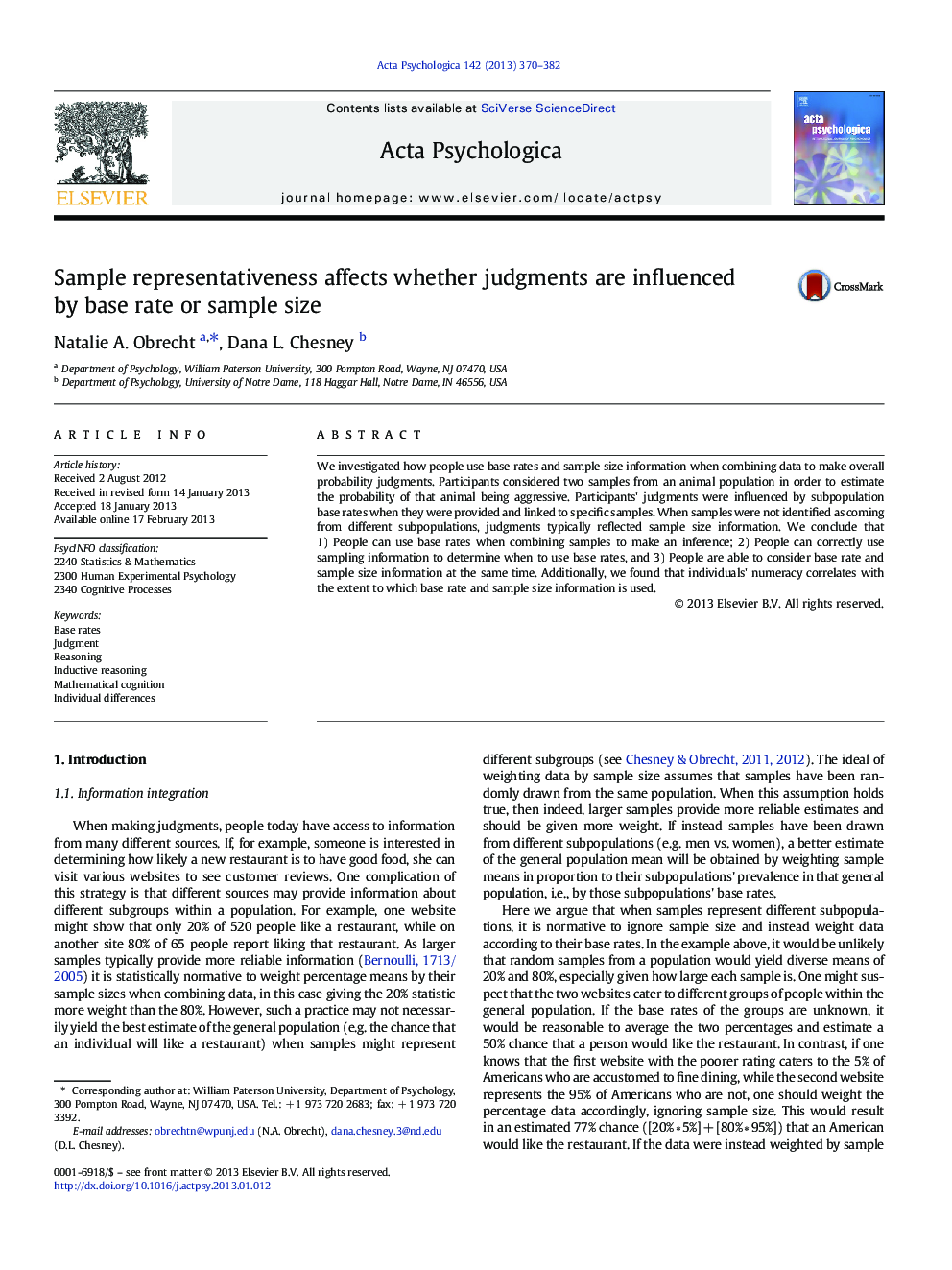| Article ID | Journal | Published Year | Pages | File Type |
|---|---|---|---|---|
| 919821 | Acta Psychologica | 2013 | 13 Pages |
We investigated how people use base rates and sample size information when combining data to make overall probability judgments. Participants considered two samples from an animal population in order to estimate the probability of that animal being aggressive. Participants' judgments were influenced by subpopulation base rates when they were provided and linked to specific samples. When samples were not identified as coming from different subpopulations, judgments typically reflected sample size information. We conclude that 1) People can use base rates when combining samples to make an inference; 2) People can correctly use sampling information to determine when to use base rates, and 3) People are able to consider base rate and sample size information at the same time. Additionally, we found that individuals' numeracy correlates with the extent to which base rate and sample size information is used.
► People can use base rate information when combining samples to make an inference. ► People can correctly use sampling information to determine when to use base rates. ► People consider base rate and sample size information at the same time. ► Individuals' numeracy correlates with use base rates and sample size information.
